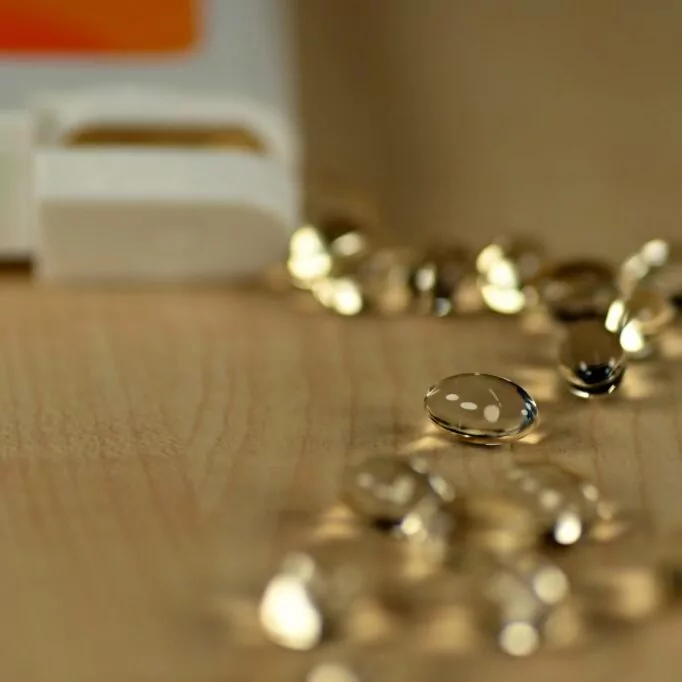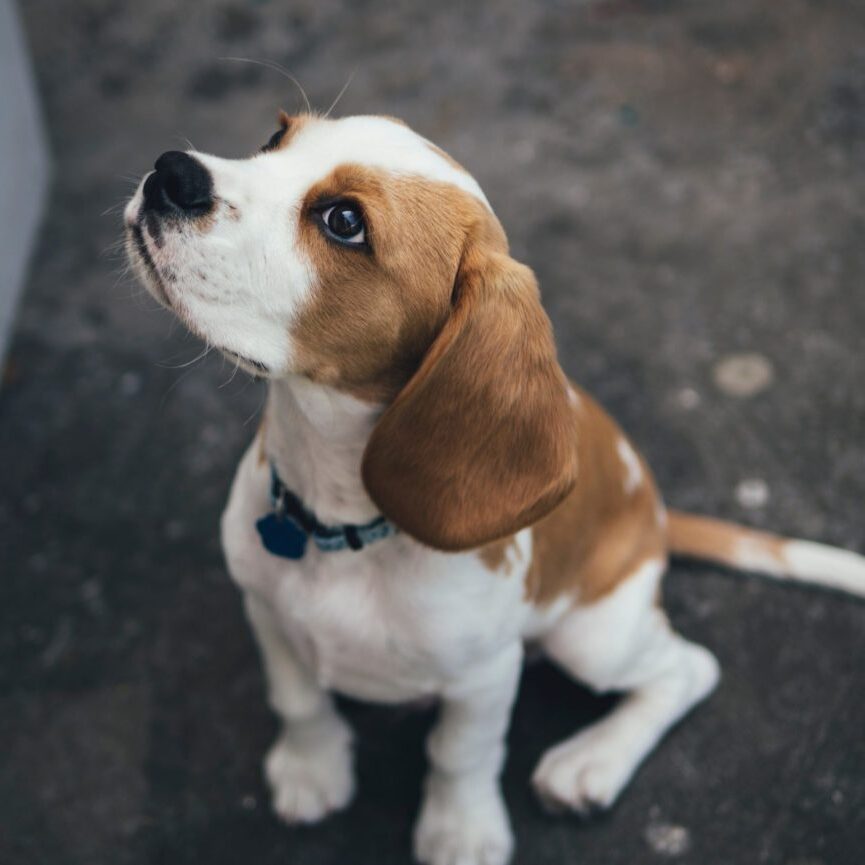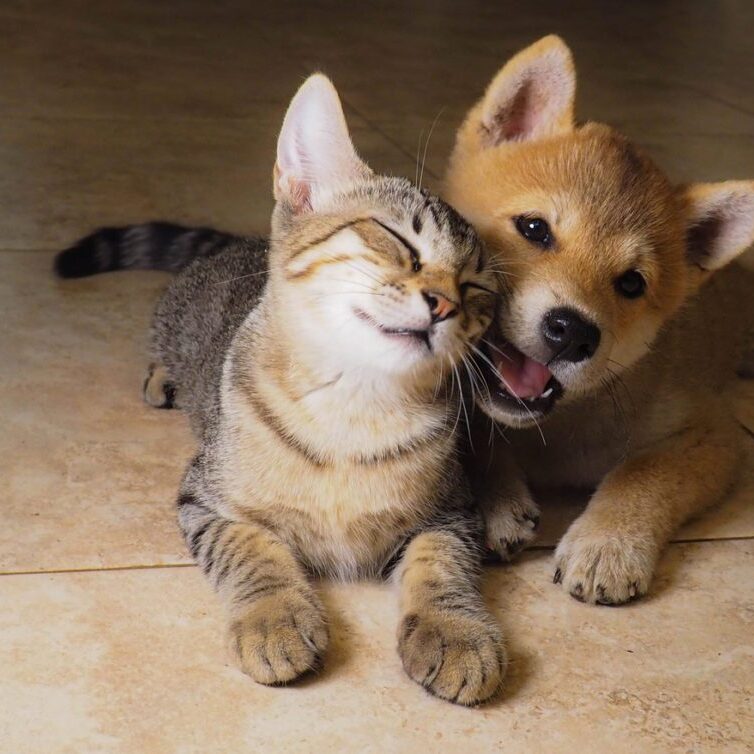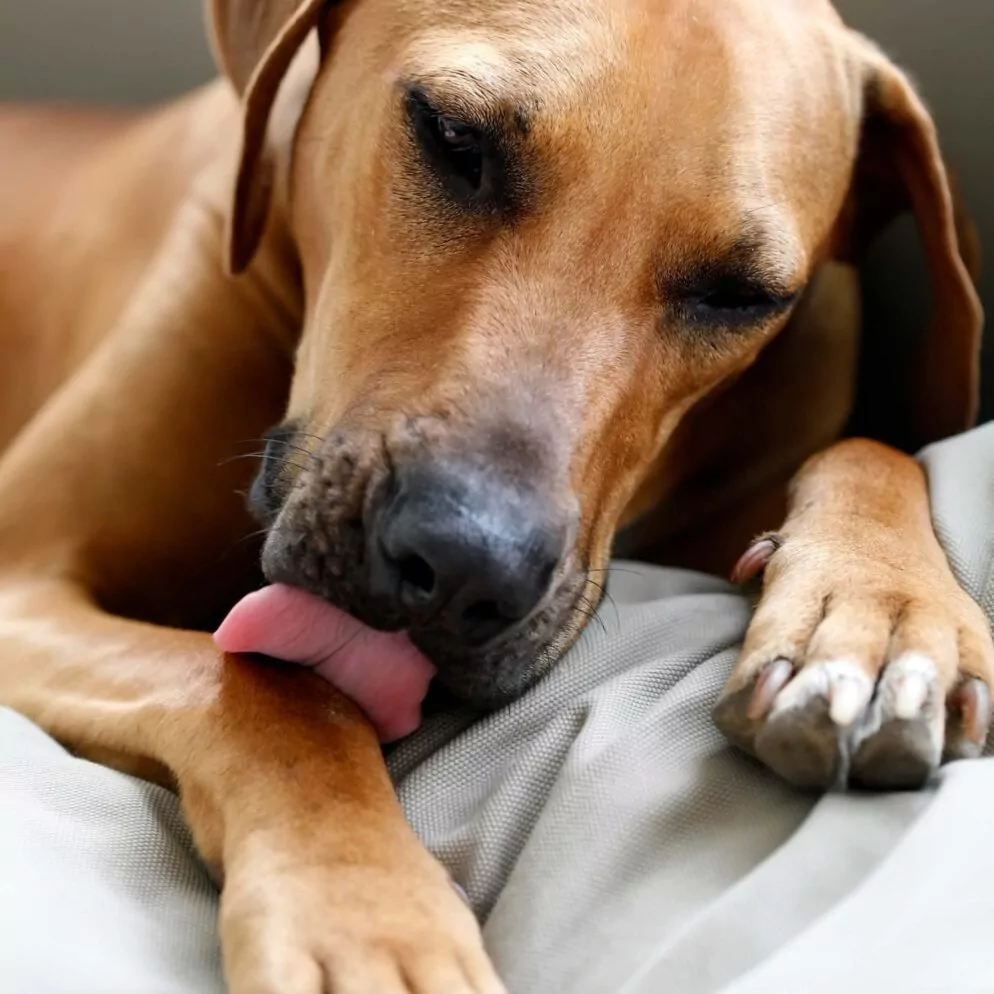Dog Health
Chunky Puppy, Fat Dog

How to manage your dog’s weight throughout life to keep him happy and healthy.
Got a roly poly pup? So cute, right? You just want to squeeze those little rolls of fat the same way your grandmother pinched your cheeks.
But while he might look adorbs, the chunky look is canceled for pups whose parents want them to be at their healthy best throughout life. Putting on weight early in life is a recipe for a fat dog in the future, and that means fat-dog health problems: osteoarthritis, vertebral disc disease, hip and knee problems, cardiovascular disease, and more. Puppies who stay lean as they grow will still reach their full size, but slowly, so their musculoskeletal system has time to grow strong.
So what should your growing puppy look like? Properly fed pups (and adult dogs) are lean with good muscle mass.
Use your hands and eyes to tell if your dog is conditioned or corpulent. When you put your hands on them, thumbs along the spine and fingers splaying down the side, you should be able to gently press in and feel the ribs. Looking at your dog from the side, his abdomen should be tucked up. Looking from above, your dog should have an hourglass shape, with an indention behind the ribs, flaring out again at the hips. If your dog’s ribs are covered in a heavy layer of fat and you don’t see a waist, he’s facing a serious battle of the bulge.
Pet body condition scoring charts go from 1 to 9, with 1 being emaciated and 9 being sumo wrestler.
“Ideal body condition is a 4 to 5 out of 9,” says Joe Bartges, DVM, Ph.D., ACVIM, ACVN, professor of internal medicine, interventional radiology and nutrition at University of Georgia College of Veterinary Medicine. “This equates to around 20 to 25 percent body fat, as body condition really is a measure of body fat content. Keeping ideal to slightly lean is a good idea.”
That’s because, as some of us know from personal experience, once those pounds pack on, it’s hard to get them to go away. The same is true for dogs. Obesity is the most common nutritional disease seen in pets.
And it’s a problem. There’s a pet obesity epidemic in this country, and dogs are at risk. They eat too much out of bowls left filled all the time and may not get enough exercise to stay in shape. Worst-case scenario, they end up being candidates for the pet equivalent of “The Biggest Loser.”
On the human side, factors that contribute to pet obesity include not recognizing that portions are too large and believing that carrying excess weight is a sign of wellness rather than what it is: an actual disease that feeds into other health problems: skin problems, gastrointestinal problems, cancer, pancreatitis, and the aforementioned joint and heart problems.
“Often, people equate pet wellbeing with eating, where in most situations it is interaction with the person, not eating per se, that is important to the pet,” Dr. Bartges says. “Therefore, going on walks and playing with toys provide the wellbeing for the pet without providing calories—and is good for the human as well.”
How Pups, Adults Eat
When puppies eat, their food is fueling growth, play, learning, and exploration. All of that requires extra protein, minerals, and calories. Most puppies eat like there’s no tomorrow, especially if they’re living with other dogs and may feel as if they have to compete for their food. (In fact, that’s a great reason to feed them all separately.)
And different puppies have different nutritional needs. Pups who will grow to be large or giant need to grow slowly to prevent excess weight on joints that aren’t ready for it yet. They can eat a food formulated for large-breed puppies that is lower in energy density or a smaller amount of a regular puppy food. Small-breed puppies do best with an energy-dense food that comes in small bite-size pieces.
To make sure puppies don’t take in too many calories, be aware from day one how much they’re eating. That’s important for a couple of reasons. It helps you manage housetraining (pups usually need to go potty right after eating) and it helps you gauge whether your puppy’s appetite is healthy, a little anemic, or over the top.
It’s a myth that dogs will regulate their intake, Dr. Bartges says. Some might, but many dogs will eat until it looks as if they might pop. Among the breeds with that reputation are Beagles, Dachshunds, Labradors, and Pugs but any dog can get into the habit if given half a chance. Measure your puppy’s food and give it at specific times. Feeding meals instead of free feeding is the best way to control a puppy’s rate of growth and helps to prevent obesity.
When to switch from puppy food to adult food varies with each pup but often depends on when they are expected to reach adult body weight. For small dogs, that might be when they’re 8 to 10 months old; large or giant-breed dogs may not reach that point until they are 18 to 24 months old. A good rule of thumb is to switch to an adult food when your puppy has reached at least 80 percent of projected adult weight.
Not sure when that will be? It can be difficult to know with a mixed breed of unknown heritage. If that’s the case, you can make the change when your puppy is 6 to 9 months old. Stick with the younger age if you think he’s going to be on the small side and wait a little longer if it looks like he’s going to be a hunk. You can also transition with a food labeled complete and balanced for all life stages. That provides the nutrients and calories a still-growing puppy needs. Then, when he’s fully mature, you can switch to a food for adult dogs.
Adult dogs are eating to maintain a healthy weight and take in the nutrients they need to stay healthy. They, too, should have a measured amount of food daily.
Instead of free feeding—leaving a bowl of food out all the time and topping it off as needed—measure the amount your dog should receive daily and give only that amount each day. You can divide it into morning and evening meals. Again, leaving food out all day doesn’t give you a visual on your dog’s appetite. Knowing whether his appetite is off—or whether he’s suddenly eating excessively—is an important part of staying on top of his health.
Changes in a pet’s eating habits, even if they seem minor, are worth bringing to your veterinarian’s attention. Your pet may be trying to tell you that something is wrong with the food or that he doesn’t feel well. Being unusually hungry is just as much a red flag as leaving food behind in the bowl, especially if your dog normally licks it clean.
Obesity Prevention Plan
We’re not dragging you if your pooch is on the pudgy side, but we do want to help you get him and keep him in shape. To keep your puppy or dog from ballooning up to cartoonish proportions, or to help him lose weight if he has, take the following seven steps.
- Figure out how much food he needs. The amount suggested on the bag is just that: a suggestion. Dogs are individuals and the amount of food they need can vary based on breed, sex, age, and activity level. There’s no specific amount you can give that will ensure them a sleek physique. So start with the recommended amount and don’t be afraid to adjust it up or down based on body condition.
- Make mealtime special. Teach your dog to sit politely while you prepare his food (it’s okay if he drools). Add some high-fiber, low-calorie goodies such as low-sodium canned or steamed green beans or a little unsweetened canned pumpkin. They will help your dog feel full. And don’t forget to present the food with a flourish!
- Monitor treat intake. Treats count toward your dog’s daily caloric total so don’t go overboard with them. Keep them tiny, tasty, and infrequent. Healthy treats include small bites of apple, banana, or carrot, and a blueberry or two. If your dog gets a lot of treats on a particular day because he went to the veterinarian or attended nose work class, cut back a little on the amount you feed that evening. Rule of paw: treats should make up no more than 5 to 10 percent of your dog’s daily intake.
- Exercise is the best way to keep obesity at bay. Even lap dogs need daily activity. Go for a walk or hike, play fetch or tug, teach your dog to swim if you have a pool or access to a lake or other body of water, encourage your dog to dance with you when you’re playing music, teach and practice tricks, build a digging pit in the yard and stud it with fun toys, or take up a dog sport such as agility, dock diving, nose work, rally, tracking, or one of the many other canine activities. If exercise is new to your dog, take it slow. His paw pads need to become accustomed to asphalt or concrete and his muscles need to become accustomed to more movement than usual. Vary your walk route and build in some sniffing time for fun. Get your veterinarian’s okay before starting an exercise program, especially if your dog is overweight, has any health problems, or is more than 7 years old.
- Introduce food puzzles into your dog’s life. Bartges is a big believer in them for helping pets to stay active and not overeat. Put a certain portion of your dog’s daily food allotment into a food-release toy that he can nose or paw at to get food to drop out. The activity will keep his body in motion and his brain in gear when you’re not at home. Make sure it’s not too difficult for him to get food out of the toy; you don’t want him to become frustrated and give up.
- Take a team approach to weight loss, with the team being yourself, your pet, your veterinarian, nurses, and front desk staff. Their positive reinforcement and counseling can help you and your dog stay on track. And remember that weight loss doesn’t necessarily occur in a linear, consistent manner, Bartges says. If you have a setback and your pet regains some weight, it’s not the end of the world. Regroup and carry on.
- Know who’s feeding your dog. Bartges recalls the case of the mysterious weight gain. Clients had their dog on a weight loss program, and he was doing well but suddenly started gaining weight. No one in the family was sneaking him food. But someone was. “They found food along one of the fence lines,” he says. “The next-door neighbor was throwing food to the dog over the fence because they felt bad the dog was on a diet. We resolved this by having the neighbor come in with the owner and dog on a subsequent visit and having a discussion of obesity, its problems, and why it was important for the pet to get weight off. After that, we achieved our goal.”
There are lots of benefits to keeping your dog lean, including saving money on dog food and veterinary bills. But the biggest one is a longer canine lifespan. In a 14-year study on the effects of body condition on canine longevity and health, one of the most significant findings was that at least half of the lean dogs lived nearly two years longer than the overweight dogs. That’s huge—in a good way!
The bottom line? If you love your dog, resist the temptation to give him the leftovers from your plate or a slice of pizza or lots of between-meal treats. He’ll be healthier for it, which means the two of you can spend more happy years together.
Resources
Association for Pet Obesity Prevention: https://petobesityprevention.org/
World Small Animal Veterinary Association Global Nutrition Guidelines: https://wsava.org/global-guidelines/global-nutrition-guidelines/
https://www.purinainstitute.com/science-of-nutrition/extending-healthy-life/life-span-study-in-dogs
Did you find this helpful? Share it!
Questions for your Vet
- What amount of food should I be feeding my puppy or dog?
- How often should I be feeding my puppy at this age?
- When can my puppy start eating just two meals a day?
- What kind of exercise is it safe for my puppy to do?
- How far is it okay to walk my dog daily?
- Is there any kind of exercise my particular dog shouldn’t do?
- What signs should I look for to see if my dog needs to stop and rest?
- Can I bring my dog here for regular weigh-ins?
About VetScoop
Pets make our lives better. At VetScoop, we’re on a mission to return the favor by giving you access to trustworthy, science-based information so you can provide the best possible care for your pets.
Related Articles We Think You'd Like





